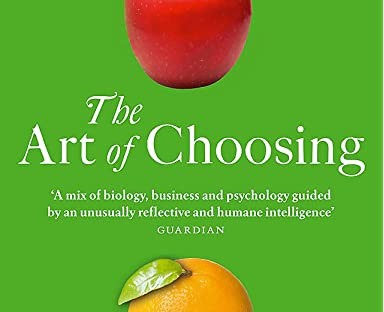Latest posts
What’s going on at parkrun?
Virtue-signalling all the way to the bank
Bud Light: brand purpose or virtue-signalling?
The Coddling of the American Mind, by Greg Lukianoff and Jonathan Haidt
Belonging, by Owen Eastwood
Such a simple thing
The Long Win, and The Scout Mindset
The Cult of We by Eliot Brown and Maureen Farrell
Coffee and covid modelling
John Lewis: so right-on it’s wrong
By theme
Marketing strategy
Insight & metrics
Innovation & inspiration
Brand & positioning
Marketing communications
Business purpose
Leadership
By industry sector
Financial services
Retail
FMCG
Technology & start-ups
Consumer services
Business to business
Other sectors
By type
Books
Comment
Quotes
Thought leadership
Having too much choice can be paralysing. This was demonstrated in a famous experiment about jam, which may have inspired the “rule of three” much loved by behavioural economists – the idea that when you give people three price options, whether it’s three quality tiers, three product bundles, or just three different versions, most of us default to the middle one. A McKinsey consultant said it was the reason they now practise the 3 x 3 Rule, in which the client first chooses from three options, which leads to another set of three choices and then a final trio of options. Thus many choices are reduced to never more than three at a time.
The experiment, conducted by US academic Sheena Iyengar, involved a tasting stall for jam in a successful upmarket delicatessen in San Francisco. Customers in a shop were offered little tastes of different jam varieties, then a money-off coupon valid for that week. But sometimes the stall had 24 varieties to try, and sometimes only six. People tasted the same number of jams, two on average, whether there were six or 24 to choose from. They were just as likely to go on to visit the jam aisle, where everyone saw the same extensive range on the shelves. Those who’d seen the larger assortment spent longer looking at the range on sale. But they often walked away with no jam. The smaller tasting assortment led to more sales: ten times more.
Iyengar’s book explores the many facets of choice and how we respond to it. We tend to equate choice with freedom. But choice can also be stressful. Sometimes it is simpler to have choice taken away, or even to cede our freedom to choose. It can be liberating to say, You decide, or, I’ll have what she’s having.
Thinking you are making a choice can make you happy, or it can make you anxious. Studies of people making career decisions have shown that people are more likely to feel regret after making an active choice, even though a decision to do nothing is just as much a choice. In one such study, researchers took the responsibility for the decision out of their hands by making it for them on the toss of a coin. More of those who made a change that someone else decided for them were happier six months later than those who maintained the status quo. And yet the evidence is that, without such a catalyst, people tend to default to the status quo. We see the consequences of our actions more easily that those of our inaction.
Then there’s freedom from and freedom to, which are quite different, as we have discovered in the age of Covid-19. I read this book early in lockdown, when precious few choices were available. Now, we have to decide what is best, for us, and for the wider good – which means deciding whether you will prioritise the economy, the environment, or your own personal situation. Go to the office and please your boss (and the Prime Minister), or keep working at home and feel safe, and be either more or less productive. Can understanding how we feel about choice help with that? I think it can. At the end of the book, Iyengar provides practical advice based on the topics of each chapter. Understanding, just as much as choice, can be liberating.
Latest posts
What’s going on at parkrun?
Virtue-signalling all the way to the bank
Bud Light: brand purpose or virtue-signalling?
The Coddling of the American Mind, by Greg Lukianoff and Jonathan Haidt
Belonging, by Owen Eastwood
Such a simple thing
The Long Win, and The Scout Mindset
The Cult of We by Eliot Brown and Maureen Farrell
Coffee and covid modelling
John Lewis: so right-on it’s wrong
By theme
Marketing strategy
Insight & metrics
Innovation & inspiration
Brand & positioning
Marketing communications
Business purpose
Leadership
By industry sector
Financial services
Retail
FMCG
Technology & start-ups
Consumer services
Business to business
Other sectors
By type
Books
Comment
Quotes
Thought leadership
